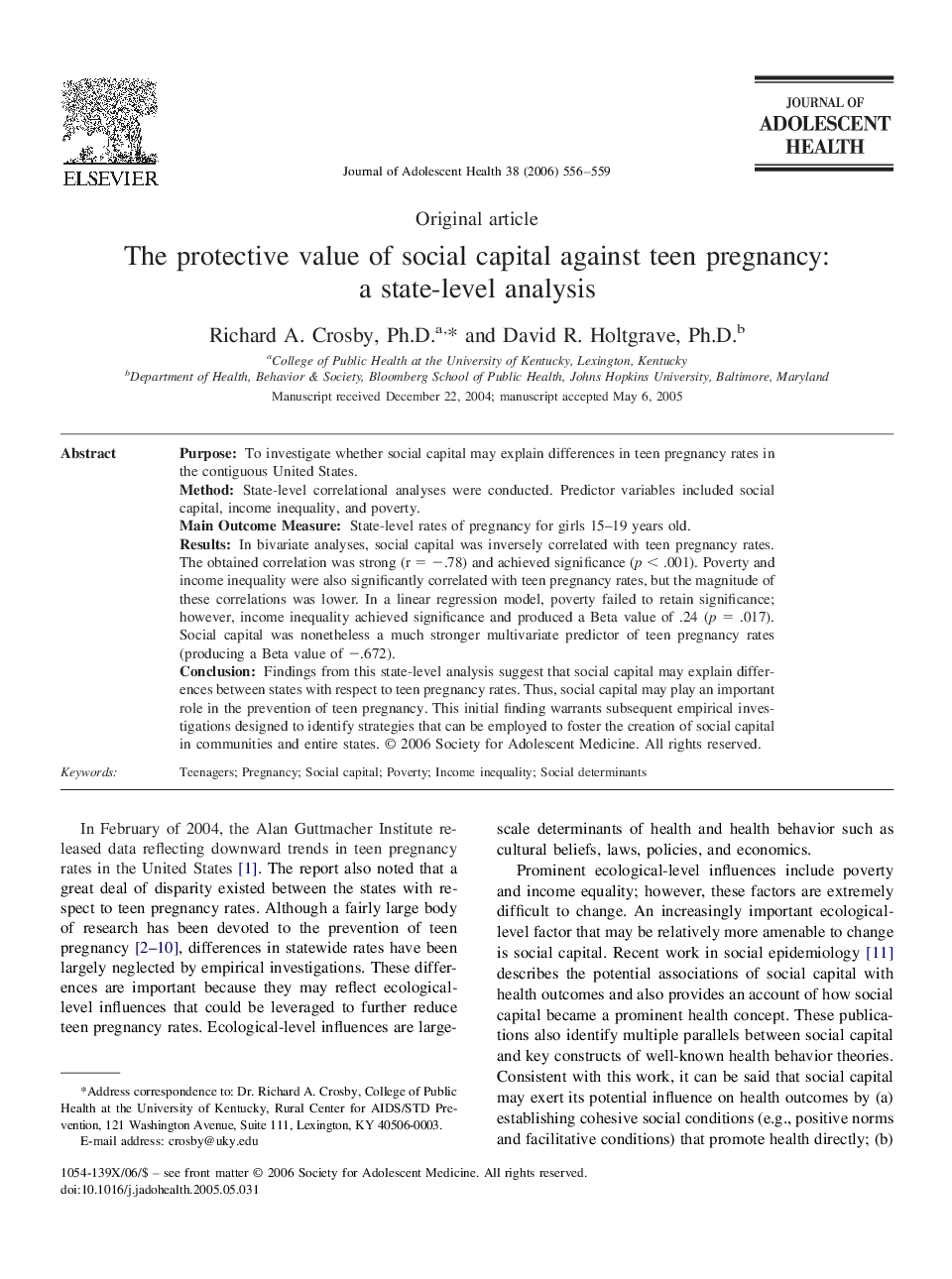| Article ID | Journal | Published Year | Pages | File Type |
|---|---|---|---|---|
| 1081223 | Journal of Adolescent Health | 2006 | 4 Pages |
PurposeTo investigate whether social capital may explain differences in teen pregnancy rates in the contiguous United States.MethodState-level correlational analyses were conducted. Predictor variables included social capital, income inequality, and poverty.Main Outcome MeasureState-level rates of pregnancy for girls 15–19 years old.ResultsIn bivariate analyses, social capital was inversely correlated with teen pregnancy rates. The obtained correlation was strong (r = −.78) and achieved significance (p < .001). Poverty and income inequality were also significantly correlated with teen pregnancy rates, but the magnitude of these correlations was lower. In a linear regression model, poverty failed to retain significance; however, income inequality achieved significance and produced a Beta value of .24 (p = .017). Social capital was nonetheless a much stronger multivariate predictor of teen pregnancy rates (producing a Beta value of −.672).ConclusionFindings from this state-level analysis suggest that social capital may explain differences between states with respect to teen pregnancy rates. Thus, social capital may play an important role in the prevention of teen pregnancy. This initial finding warrants subsequent empirical investigations designed to identify strategies that can be employed to foster the creation of social capital in communities and entire states.
